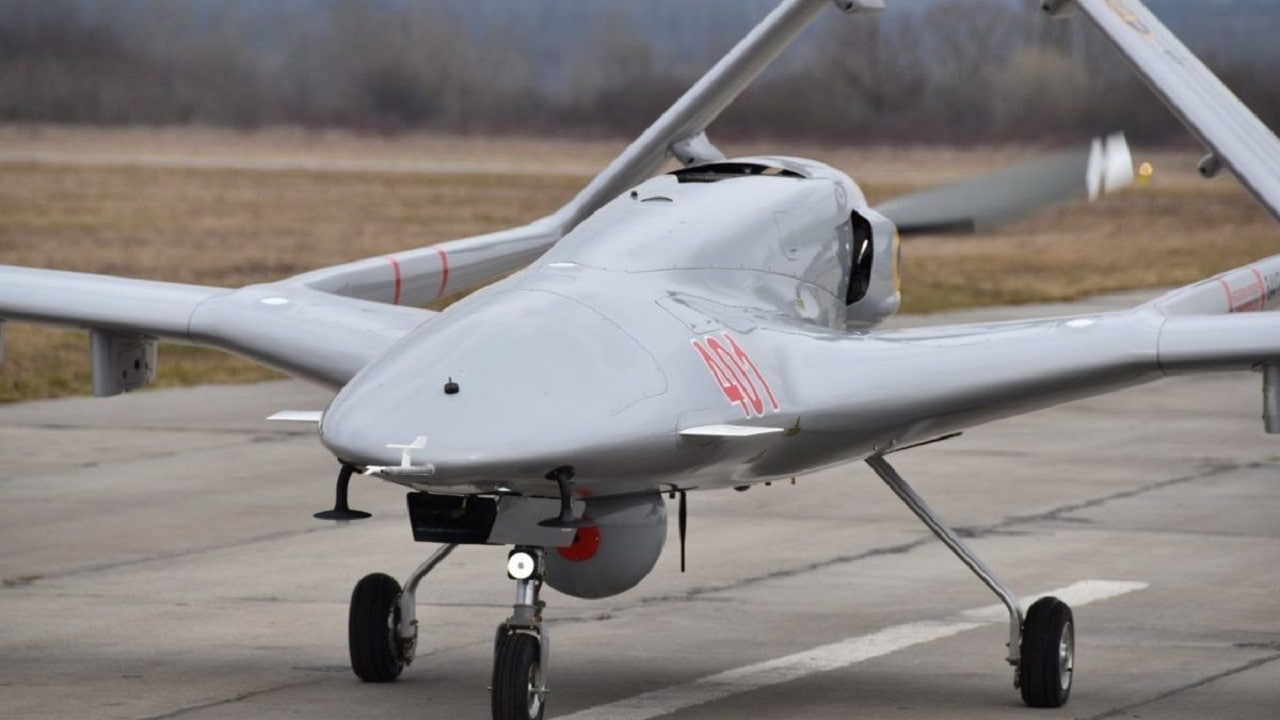New Song Lauds the Success of Ukraine’s TB2 Bayraktar Combat Drone – They have written songs and named animals at the zoo for it. The TB2 Bayraktar combat drone is becoming part of Ukrainian pop culture. This is because the unmanned vehicles are shooting deadly missiles at Russian tanks and other ground targets making the Kremlin pay for its decision to invade Ukraine. Let’s take a closer look at why this armed drone has such skill when flying over the country and delivering a needed death blow to the Russians.
The Drone Is Part of the National Conversation
Some Ukrainians are naming their pets “Bayraktar.” Others are singing lyrics in a song lauding the drone’s prowess. “Those shiny tanks are being set ablaze — Bayraktar — that’s the new craze,” goes the chorus of a popular song about the unmanned system.
The Drone is Combat-proven
Before shipment to the Ukrainians, the Turkish military has employed the TB2 in Syria and Iraq since 2014. It’s a medium altitude pilot-less aerial vehicle with fairly long endurance. It was decisive in the conflict in Nagorno-Karabakh between Azerbaijan and Armenia in 2020. The Ukrainians have put it in play against the Russians – with numerous potent strikes against the Russians since the early days of the war.
The Turks Have a Hit on Their Hands
TB2 Bayraktar drones used in Ukraine are manufactured by Baykar Technologies, an aerospace firm in Istanbul, Turkey. The unmanned vehicle has a maximum speed of 137 miles per hour, can carry a payload of 331-pounds, and fly at an altitude of up to 25,000 feet. It can also stay in the air for as long as 27-hours.
“These TB2 strikes are…important for Ukrainian morale precisely because it shows Russia does not control the skies,” said Aaron Stein, of the Foreign Policy Research Institute, quoted in WION News.
The Drone Has Many Kills
Death and destruction attributed to the TB2’s exploits have gone viral on social media. The damage the drone has caused to Russian military hardware is extensive. The Clash Report, which is a defense media site published on Telegram, said on Twitter on April 13 that the TB2 has dominated the battlefield.
The drone has reportedly destroyed 24 Russian military vehicles, ten SAM systems, nine helicopters, six armored vehicles, two command posts, two trains, one communication center, and one multiple-launch rocket system, according to The Clash Report.
These numbers have not been independently verified and its is not clear what their primary source is, but even if half the damage was done was true, that would be a considerable loss for the Russians at the hands of the TB2.
Laser-guided Munitions Fired at Night
The drone carries laser-guided MAM-L lightweight Smart Micro Munitions. These missiles weigh 49-pounds and have a top range of nine miles. They can launch at night to surprise the Russians.
The Russians have bragged that they have shot down dozens of Bayraktars, although this is perhaps an inflated claim. But the TB2 may have adjusted tactics to stay out of range of Russian air defenses and are now serving more as artillery spotters. The Ukrainians may be running out of missiles too.
More Missiles Needed
On April 1, the U.S. Department of Defense announced $300 million of military assistance to Ukraine. The top line of the list included “laser-guided rocket systems.” This could mean more MAM-L Smart Micro Munitions to supply the TB2. If so, that means the United States believes that drone warfare can have a substantial impact on the outcome of the war.
The Ukrainians may have to buy more TB2s to keep up with the needs on the battlefield. Meanwhile, the Russians will likely adjust their air defenses to scope the movements of the slow-flying drone. Until then, the Bayraktar will live on in the Ukrainian consciousness as a weapon that has punished the Russians throughout the war.
Now serving as 1945’s Defense and National Security Editor, Brent M. Eastwood, PhD, is the author of Humans, Machines, and Data: Future Trends in Warfare. He is an Emerging Threats expert and former U.S. Army Infantry officer. You can follow him on Twitter @BMEastwood.

